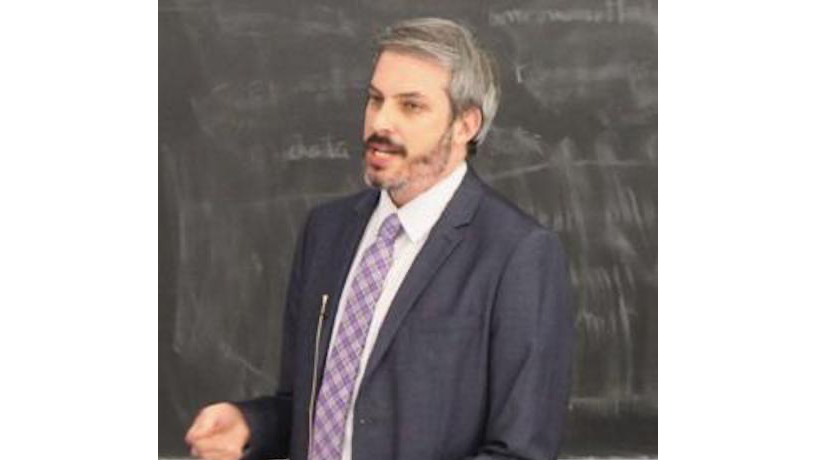Profs Win NSF RAPID Grants for COVID-19
The National Science Foundation is now offering Rapid Response Research (RAPID) grants for non-medical, non-clinical-care research that can be used immediately to explore how to model and understand the spread of COVID-19, to inform and educate about the science of virus transmission and prevention, and to encourage the development of processes and actions to address this global challenge. Several of our researchers have received RAPID grants for COVID-19-related research, including:

Ponisseril Somasundaran
Prof Ponisseril Somasundaran: Decontaminating and disinfecting with foam formulations
Decontamination and disinfection has become a part and parcel of our day-to-day activities during our current COVID-19 pandemic, both at home and especially in commercial, industrial, and healthcare centers. A common approach to containing the spread of COVID-19 is to spray decontaminating disinfectants onto the floors in hospitals, apartments, parks, airports, footpaths, and other surfaces. A variety of disinfectants used currently include bleach, hydrogen peroxide, phenols, and iodophors.
Spraying decontaminating bleach solution onto surfaces multiple times a day results in extensive seepage of bleach into the ground. In addition, prolonged exposure to disinfectant fumes can be harmful to the lungs and irritating for the respiratory tracts of people, from first responders to healthcare workers and volunteers.
Ponisseril Somasundaran, Lavon Duddleson Krumb Professor of Mineral Engineering in the department of earth and environmental engineering, has received a six-month $100,000 NSF RAPID grant to develop a set of decontamination foam formulations that are significantly more effective for application across a variety of surfaces while providing uniform deposition of the decontaminant, thus reducing the amount and frequency of applications. Somasundaran’s group, led by Associate Research Scientist Partha Patra, aims to add a special class of molecules—surfactin—to the foam formulation, which functions both as soap molecules promoting the formation of foam and as a disinfectant that enables the reduction of the bleach content. By manipulating the surfactant-to-water ratio and surfactant type and content, the team will tune the foam texture to enable complete coverage of the disinfectant on surfaces.
“The innovative novel antiviral foam formulations we develop, which will include silicones, will spread across and penetrate cracks and crevices more effectively than current practices, and they will stick onto a surface for a period long enough to decontaminate,” says Somasundaran. “In fact, the silicone formulation will even disinfect jewelry on the hands of users, including underneath rings, where the COVID virus can hide and flourish. Our formulations will be more efficient for disinfection operations, while also minimizing the incumbent environmental health exposure risks to first responders and health care workers.”

Ethan Katz-Bassett
Prof. Ethan Katz-Bassett: Measuring the resilience of the internet
Ethan Katz-Bassett, associate professor of electrical engineering, was awarded a year-long, $124,667 National Science Foundation RAPID grant to study the impact of people’s changes in behavior on the internet during COVID-19. The pandemic has led to unprecedented and ongoing changes to daily life, including shelter-in-place orders, widespread closing of businesses and schools, and work-from-home and school-from-home at previously unknown levels. These changes in behavior are placing extraordinary demands on the internet .
Katz-Bassett, working with Matt Calder, his former PhD student who now works at Microsoft, and Dave Choffnes, a computer science professor at Northeastern University, will measure the internet’s ability to meet these demands, including comparing its performance before, during, and after the peak of COVID-19; whether the amount of change varies between areas heavily impacted by COVID-19 and those less impacted; and whether and how large networks adapt.
“Measuring the network impact of COVID-19 will highlight the internet’s strengths and weak points and is a crucial step towards improving the internet’s future resilience in the face of pandemics, natural disasters, large scale conflict, and terrorist attacks,” says Katz-Bassett, who is also a member of the Data Science Institute. “The internet is designed for resiliency, but our recent research has revealed that large cloud and content providers have been avoiding public Internet exchange points and the public Internet in favor of private interconnection and private wide-area networks. We hope to reveal the relative resilience of these strategies."
The researchers will combine multiple internet-scale datasets that provide complementary views to investigate how responses to COVID-19 have impacted the internet and how networks have reacted. They will specifically measure how workloads have changed and their impact on networks in response to COVID-19 by measuring traffic patterns worldwide and the impact of congestion on performance globally. In addition, the team will measure how networks react to these changes in workloads by monitoring path changes that indicate rerouting of traffic during surges induced by measures in response to COVID-19, identifying whether traffic management is deployed for prioritizing and deprioritizing certain network flows, and measuring whether networks add interconnections and upgrade capacity.
The team plans to publish their data, measurement tools, and analysis code at http://covid19-internet-resilience.github.io/ for other researchers to use and explore. “Understanding how the internet performs under stress should play a critical role in informing future research, funding, and design of critical internet infrastructure,” Katz-Bassett adds.
